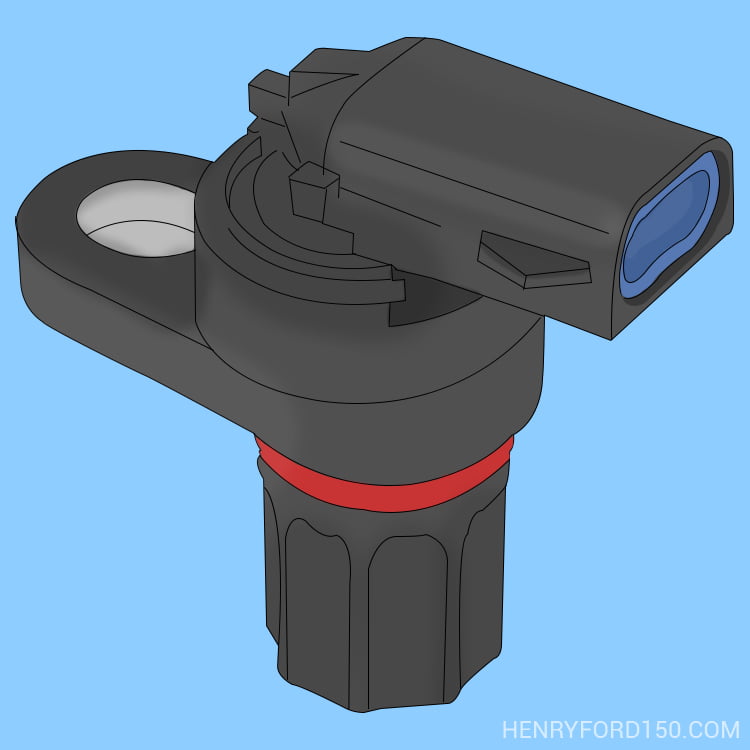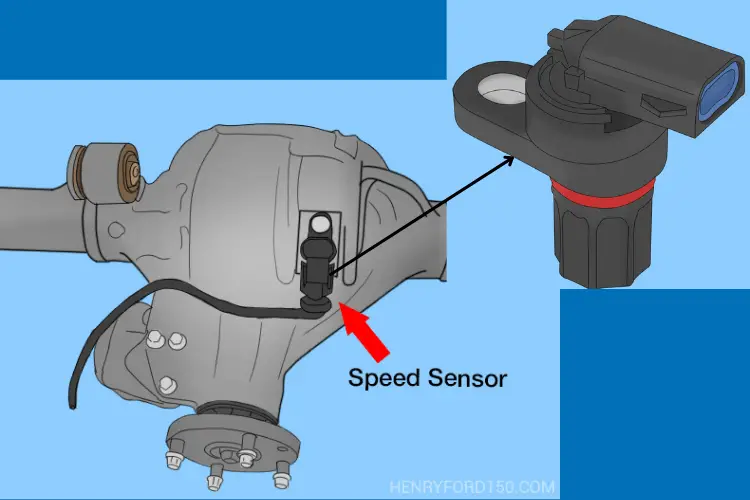Driving a Ford F150 is a great experience, and the speed sensor is essential to this. When the speed sensor has a problem, your ride isn’t going to be as smooth. So, where exactly is the Ford F150 speed sensor located?
You can find the speed sensor under the hood of your F150, on the rear section of the transmission, along with other mechanical components. However, depending on your Ford F150 version, there may be a slight variation. Keep reading to deep dive into the speed sensor’s location and things around this F150 part.

What is the Speed Sensor in Ford F150?
In layman terms, a speed sensor is the information center of the truck’s wheels. The speed sensor may not directly influence the speed of your vehicle, but it plays a role in how swiftly your car engine runs. This sensor monitors the input and output shaft speed. It relays information from the truck’s wheels to the vehicle’s main computer and vice versa. This tells you how fast your wheels are going with a real-time estimate of the vehicle’s speed. It also helps to notify the wheels to increase or decrease their cycle rate, based on any commands you may relay.

The speed sensor is also involved in braking or navigating vehicles with traction. For example, your truck wheels will lock up when you slam the brakes without the speed sensor. However, when it comes to traction, you get greater control over the actions of your wheels. All thanks to the speed sensor! Simply put, the speed sensor helps you to control your vehicle’s speed.
Ford F150 Speed Sensor Location
Changing the speed sensor of your truck is an easy task to come by. You’d only have to locate it and handle uttermost care when tampering with the sensor. The location of the speed sensor is based on the type of drive train and transmission in your Ford pickups. If you have the 4×2 F150, the speed sensor is on the rear section of the vehicle’s transmission. If your truck is a 4×4, the speed sensor will be on the transfer case.

(Credit: 2CarPros)

(Credit: 2CarPros)
The speed sensor works simultaneously with the transmission and is usually located close to it. If you aren’t familiar with the transmission location, it’s just beneath the hood, towards the vehicle’s passenger direction.

You won’t need special tools to pull it out should you decide to replace it. The speed sensor of the Ford F150 slides right out when you choose to remove it.
Common Symptoms of Ford F150 Speed Sensor Problems
You can easily tell when the speed sensor of your F150 is faulty or in bad shape. While you would likely get a notification, it isn’t usually reliable. A notice may mean something is wrong and not necessarily that the speed sensor is the sole cause. You should look out for other signs to identify when your speed sensor has a problem. Some of these signs include:
Erratic speedometer readings
Without the speed sensor functioning optimally, there is proper information being transferred to the main control of the vehicle. This will cause the speedometer to have incorrect readings.
Visible check engine light
There may be other reasons why your check engine light is on, but the speed sensor is one of these reasons. To be sure, you can pop the hood open to check if the speed sensor is exemplary. You should then compare the one in your car to another for any evidence of physical damage. If, however, you aren’t comfortable checking it yourself, you can have a mechanic do it on your behalf. If there is damage, you may have to switch out for a new one.
No cruise control
One of the reasons why most people love the Ford F150 is the cruise control feature. Your speed is controlled automatically depending on the speed sensors and their data to the vehicle’s central control. Unfortunately, the information isn’t relayed when something is wrong with the speed sensor. Instead, the system will read an error, and cruise control stops functioning at its best. You should be able to change it yourself, but if not, you can take it to a mechanic.
Improper or harsh shifting
Shifting gears is an integral part of driving, and the speed sensor plays a crucial role. The signal coming from the speed sensors allows the powertrain to control shifting. Without it, the shifting won’t work, or it will work cruelly. It may be rough or require more effort to control with respect to when the speed sensor is functioning optimally. If you notice minor or major problems with your F150 shifting, you can check the speed sensor and change it if necessary.

Read more: Ford F150 PCM Failure Symptoms
What Causes The Speed Sensor To Fail?
Understanding what causes the speed sensor to fail can help to prevent or, at the very least, anticipate it in the future. There are several possible causes of damage to a speed sensor, and they include:
Internal electrical fault
Electrical faults sometimes happen whether or not we want them to. It isn’t anyone’s fault per se, but it affects the speed sensor once it happens. An abnormal signal or some external factor can cause the defect. Regardless, an electrical failure can cause your speed sensor to fail.
Wear and tear
In the end, a speed sensor is still a machine. Like all machines, this is also subjected to wear and tear. The more you use your Ford F150, the more the speed sensor works and is exposed to the possibility of failing. The speed sensors are typically built to last, though, so you may want to check on the expected lifespan of a speed sensor.
Poor maintenance
While wear and tear are inevitable, they can be managed with proper care. Regularly checking the speed sensor to ensure it functions properly can help extend its shelf life.
Read more: Wrench Light On Ford: What Is It? [Answered]
Is it Safe to Drive with a Failing Speed Sensor?
No, it isn’t safe to drive with a failing speed sensor unless you happen to be an expert driver who has mastery over their vehicle. Clearly, it is possible to drive your car when the speed sensor is failing or damaged. It just isn’t advised as the automatic features and perks that come along with a speed sensor are unavailable. For example, you may find it more challenging to shift, or you won’t have access to the cruise control feature, or most certainly, you’d have to drive without warning light.
All these can be managed and operated with minimal fuss for a mechanic or an expert driver. Outside of professionals, however, you will need to fix the speed sensor before it is safe to drive the vehicle. If you must go, however, make sure you are simply driving to a mechanic or somewhere you can get your speed sensor fixed. This way, you only have to worry about half the trip without complete control of your vehicle.
How To Test and Fix The F150 Speed Sensor
Testing or fixing a bad F150 speed sensor is not a complex process. Follow the steps listed below, and you should have your speed sensor working in no time.
Step 1: Park the car on a level surface. It may not seem important, but it gives you the best access to the speed sensor
Step 2: Locate the speed sensor. As stated earlier, you can find the speed sensor below the transmission
Step 3: Remove the sensor. Some wires would be connected to the speed sensor. You would have to unplug them before removing the speed sensor
Step 4: Connect the wires to the multimeter
Step 5: Set the multimeter to AC
Step 6: Test the speed sensor using a drill bit
Step 7: Make sure the drill bit fits securely into the speed sensor
Step 8: Spin the gears of the speed sensor
Step 9: Read the multimeter
If the sensor is faulty, then you will need to change it
If it is a faulty connection causing the problem, you should identify and fix it.
Final Thoughts
There is nothing scary about fixing or changing the speed sensor in your Ford F150. The only thing needed is to know its location. Also, please make sure to turn off your vehicle to avoid an electrical mishap while loosening the wires. Once you follow adequate precautions, you can change your speed sensor easily and have your vehicle in optimal shape. You get to enjoy your Ford F150 with benefits like cruise control truly. Best of all, you won’t have to spend hundreds or thousands of dollars to make this possible.